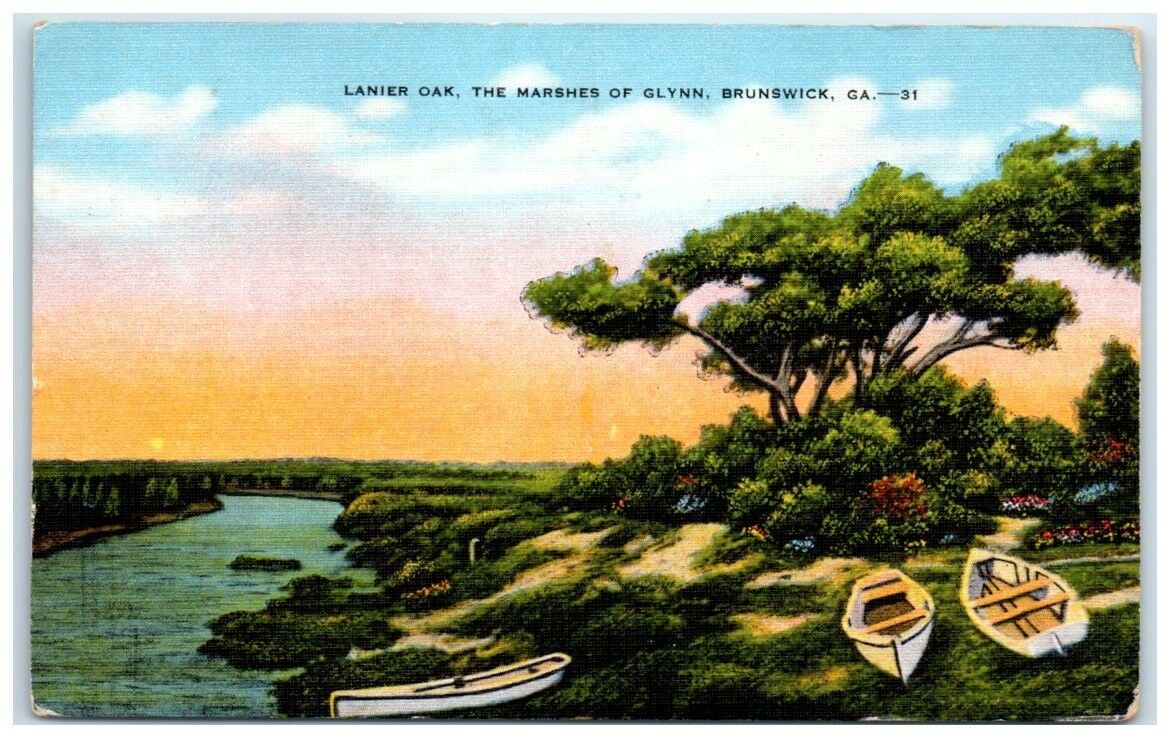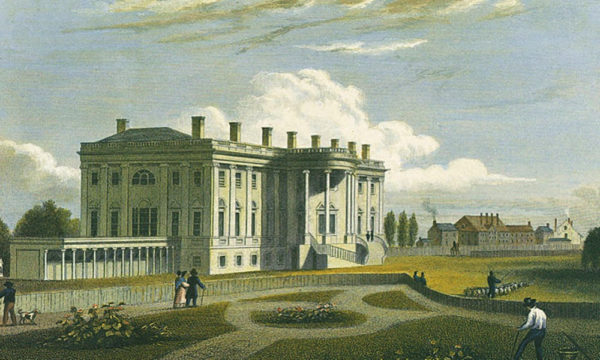Editor’s Introduction: This short essay in The South and the Building of the Nation series highlights the spirit of reconciliation that most Americans embraced by the early twentieth century. Published in 1909, The South in the Building of the Nation offered native Southerners–almost all of whom possessed terminal degrees in their academic fields–a chance to offer a critical yet often positive examination of their own history, economy, social, artistic, literary, and intellectual life, and the South’s place in the United States. Notice that Professor Sledd reasons that the influx of tourists from Northern States forced sectional animosity to decline while concurrently praising the impact on health and wellness from the Southern clime. Sledd had been interested in lessening sectional differences for over a decade when he published this piece. In 1902, he wrote a critical essay on lynching in the South that resulted in his termination from the Emory University faculty. He then attended Yale where he received his Ph.D, but instead of remaining in New England, he returned to his native South and eventually served as the first President of the University of Florida. Of course, Florida became the center of Southern tourism, particularly after Henry Flagler connected New York to central Florida and eventually Miami through his vast railway network.
From The South in the Building of the Nation Vol. VI, Economic History 1865-1910.
Situated between the Mason-Dixon line and Key West, 24° 30′ north latitude, the Southern states present the general climatic characteristics of Southern Europe, Northern Africa, and Middle Asia.
While Richmond and Lynchburg, Virginia, are about on the same parallel with Seville, Palermo, and Athens, St. Augustine is on the same parallel with Cairo, and Key West is further south than Benares and only a little farther north than Calcutta and Mandalay.
The climate is further modified by proximity to the sea-the Southern states having more seacoast than all the rest of the Union-and by the Appalachian Mountains, which run parallel with the seacoast almost as far south as Birmingham and Atlanta, and reach their greatest elevation in western North Carolina. With the mountains should be mentioned the fact that the largest forest area, especially of pine, in the United States is in the South. This contributes to the modification of the climate and to its healthfulness.
While the mean winter temperature is well above freezing in all the Southern states, though not in all parts of all the states, and is sub-tropical in Southern Florida, the mid-summer temperature in the mountain regions is between 70° and 80°, and is thus similar to that of southern Michigan, Wisconsin, and Minnesota.
This mild and healthful climate, coupled with the natural beauties, historic interest, and commercial opportunities of the section, attracts increasing numbers of health and pleasure seekers to the South from all parts of the country east of the Rocky Mountains, but especially from the North Atlantic states. The origin of this movement antedates the war between the states. But while Old Point Comfort (the original Hygeia Hotel) was built there in 1821 and the White Sulphur Springs, in Virginia, and some other places, were popular resorts before the war, the lack of transportation facilities and the strained relations between the sections from 1830 to the close of the Reconstruction were such as to restrict both the freedom of the movement and its economic importance.
Since the war, however, the movement has progressed with great rapidity, and has reached imposing proportions and distinct economic importance. Not only have certain specific places along the Atlantic seaboard from Old Point to Key West, and thence around the Gulf Coast from Tampa to Corpus Christi, and other inland places along the major routes of travel, such as Asheville, Aiken, Augusta, Hot Springs, and many others, become definite centres of tourist resort; but large areas contiguous to these centres, and in some states, especially in Florida, the entire state is penetrated and influenced by this tourist travel and transient residence. There is, also, an important and increasing tendency on the part of these visitors from other sections not only to repeat and extend their travels, but to establish winter homes of their own in the South. This is most conspicuous in the states of the Atlantic seaboard, Virginia, North and South Carolina, Georgia, and Florida. In the latter state, the whole peninsula, especially south of Palatka and Gainesville, is dotted with such homes.
Such a condition is necessarily of great economic significance, to the South first and then to the nation as a whole. Washington touched on this point in his Farewell Address. Pointing out the importance of unity and the strengthening of the sense of union among the several states, he went on to say: “The North, in an unrestricted intercourse with the South, protected by the equal laws of a common government, finds, in the productions of the latter, great additional resources of maritime and commercial enterprise, and precious materials of manufacturing industry. The South, in the same intercourse, benefiting by the agency of the North, sees its agriculture grow and its commerce expand.” The economic contrasts, and finally the political conflict, between the sections impaired this intercourse, as has been said, and defeated its natural consequences. The present tourist movement (since the eighties) has been an important feature in inter-sectional intercourse, and has had its economic influence both in the directions indicated by Washington and in other ways unforseen by him.
Perhaps the most important influence is the potent tendency of such intercourse to develop the spirit of sympathy and mutual understanding between the sections, thus obliterating sectional antagonism, reducing to a common mean sectional divergencies, and promoting that sense of common interests and a common union of which Washington spoke. This involves the acquisition of new ideas by the visitors, and the infusion of new ideas into the South, with the readjustments consequent upon the acquisition of more knowledge and larger and more liberal views. In this particular the movement is the converse of the education of Southern men and women in Northern universities and colleges.
More concretely, the movement tends to spread and emphasize a knowledge of the resources and opportunities of the South, and thus to hasten its development both by the introduction of new men and new capital and by arousing the spirit of activity and emulation among the Southern people themselves. Not only does the North find “great additional resources of maritime and commercial enterprise, and precious materials of manufacturing industry” for use in the North; but it finds a rich field and abundant opportunity for the use of Northern men and money in the South. Not only does the South “see its agriculture grow and its commerce expand,” but it sees the opportunities and feels the impulse towards diversified industries and a larger commercial life, so that it is less and less willing to leave manufacturing industries to the North and is steadily widening its own activities in that proper and inviting field.
It is not to be maintained that the New South is the product of any single cause; but probably nothing has done more to give impulse and direction to its progress than intercourse between the sections, one important feature of which is the tourist movement southward. The general situation may be illustrated by conditions in a tourist town. In addition to the general activity created by the presence of many visitors and transient residents and the large amount of money spent by them, there is a general breaking down of ultra-sectionalism on both sides, especially among the permanent population, a tendency towards cosmopolitanism of view and sympathy, a new and larger outlook upon life and its opportunities, and an impulse towards the business principles and activities which the visitors exemplify and which they describe and discuss among themselves and with their hosts. Thus the traveller and transient resident leave behind them much more than the money they have spent for their entertainment. They leave the pregnant thought of change in the direction of a new social and economic life.
One other aspect of this subject may be mentioned in conclusion. Every hour added to working life, whether in a given year or in the life term, and every element added to working energy of the individual, has a monetary and economic value. Resort to the South for pleasure, and, especially, for health, tends to the saving and lengthening of life and the increase of energy. Just how much this contributes to the wealth and the economic efficiency of the nation it is impossible to say; but it is a consideration that cannot be overlooked, and it is quite safe to say that its contribution is considerable.
Approximately 300,000 people die annually in the United States from diseases of the throat and lungs, more than two-thirds of them from pneumonia and consumption. Many times this number are constantly afflicted with these diseases. Resort to the milder climate, to the bracing and healthful air of the mountains and wide forest areas of the South, would save many and relieve most of these sufferers. If their average economic value be $700 a year, the saving of one year of effective life to 100,000 of them would constitute a direct contribution of $70,000,000 to the wealth and efficiency of the nation. This in general terms. But who can estimate what it may mean to the nation and the world, if his winter home in Florida adds a working year to the life of such a man as Thomas A. Edison?
The South is making here a great but quiet contribution to the nation’s wealth and power. Its contribution is limited by reason of the fact that too many of those to whom the South means longer life and better work are unable, because of poverty, or unwilling, because of ignorance, to take advantage of its benefits. When a wise philanthropy shall have opened the way to some, and a better knowledge shall have provided the impulse to others, the New South will become the greatest conservator of the nation’s human resources and give to life both a larger significance and a larger value.
BIBLIOGRAPHY.-Barbour, George M.: Florida for Tourists, Invalids and Settlers (New York, 1882); Beecher, Mrs. H. W.: Letters from Florida (New York, 1879); Ingle, Edward: Southern Sidelights (Boston, 1896); James, Bushrod W.: American Resorts and Climates (Philadelphia and London, 1889); Warner, C. D.: Studies in the South and West (New York, 1889).






